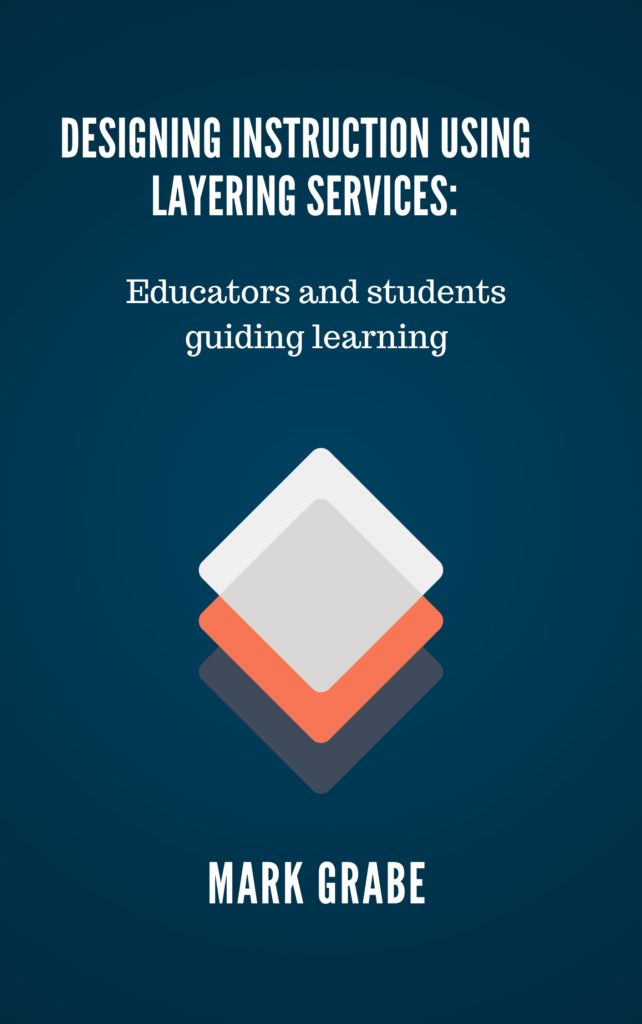I have been writing about layering services for several years. Layering is my effort to create a general umbrella for multiple services that allow an educator/designer to add elements to existing content with the goal of improving learner understanding and retention. The existing content could be a web page, a video (youtube video), a pdf, or a graphic. The elements could include such things as highlights, notes, arrows, questions, and discussion prompts. While what I write tends to be aimed at educators, these services can also be applied by learners. We are all learners and probably are familiar with highlighting and annotating. Layering expands such additions.
I see layering as a way to think about the design of improved flipped classroom video, online learning and studying, digital literacy and content evaluation, and efforts by educators to make greater use of noncommercial content in place of textbooks.
As I have explored more and more services and as more services have been created over the past several years. I have begun categorizing these services. My existing system appears below. I am most interested in Category 1 because this group of services and content would take advantage of the use of existing online web pages and videos in a way that I see as fair to the content creators (preserving copyright and income opportunities) and a way to develop skills relevant to the use of online content outside of the classroom (digital literacy).
Category 1 – two servers/independent content. My focus in the original edition of this book was focused on this category of content. Examples of this category involve a real time combination of content from a source with added elements layered on this content from a second server. The combination is created when requested in contrast to a stored combination of a source modified in some way. I think the difference I am describing here is important as it addresses a copyright issue and what might be concerns of the authors of the original content. The content creators may intend that their content contain ads or record hits associated with the original web site as a source of income. Content that is captured in some way and then modified to be provided from a different server would not address these concerns. So, in this approach, a request to the server providing the layering service sends a request to the server providing the original content and then adds elements on this content before sending the composite to the learner. The original content creator is credited with hits on the original server and any compensation related to clicks on embedded ads. The layering service may be free or may require payment for the addition of layered elements and other capabilities. Examples of this type of service include: Hypothes.is, InsertLearning, Scrible.
Category 2 – One server, independent purchased content. This category of service provides the opportunity for layering elements and possibly collecting and using information generated by these layered elements making use of commercial content provided by an independent source. As the eventual user, you don’t purchase the original content because the layering service collects the money and then compensates the source. It would be possible to purchase the original content, but then not have access to layering capabilities. The examples I have in mind typically involve digital textbooks. Examples of these layering services include: Glose, Perusall, Kindle/Diigo. I list Kindle in combination with Diigo because many are familiar with Kindle books, but the highlighting and annotating capabilities of a Kindle book can be extended using the capability of Diigo to offload the layered content, organize this content using an outliner, and share this content with others.
Category 3 – One company offering both a layering capability and content. In this example, a company that provides digital content and includes layering capabilities that can be used with this content. An example would be Newsela.
Category 4 – User can upload content to a service providing layering and collaboration capabilities. Examples include Google docs, Edji, Kami, PlayPosit.

I have written a Primer explaining how layering services can be used to modify existing online content to be more appropriate as an instructional resource. The Primer reviews the elements most commonly available in these services and how they can be applied most productively by both educator and learner. The Primer also includes tutorials for two services appropriate for web pages and two services appropriate for online video. Both paid and free services are considered.
Reviewing this blog for earlier posts tagged with layer identifies a few services should you be interested in descriptions of several other services.
![]()